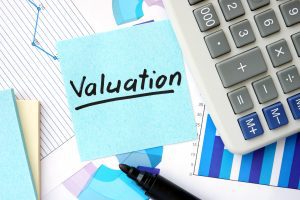- How To Choose A Business Broker Intermediary - January 25, 2023
- Buying and Selling a Business in a Changing Market - July 22, 2022
- How to Add Value to Your Business - January 18, 2022
Most sellers are not sure if they are ready to sell until they know what their business is worth. In fact, the conviction to sell comes when the “pain point” exceeds the value of the business to the owner. A Broker’s Opinion of Value, or BOV, can help an owner determine what the business would sell for on the open market. This, in relation to an owner’s “pain” level, is often enough to make a decision if they are ready to sell.

What is “Pain” in Business Ownership?
Owners who are making money and in no pain typically don’t sell. But most owners have some level of pain in running their businesses and wonder what life would be like without it.
Owners normally have a challenge in quantifying how much pain they are in with their business. The most common forms of pain come in the form of burnout, poor health, or simply age. According to an annual survey by the IBBA and Pepperdine University the top reasons sellers go to market are for retirement, burnout, health, and relocation. These are all synonyms for the pain business owners experience.
To assist owners in determining their pain level, I like to ask them how much pain they are in on a 0 to 10 scale; 0 being pain free and 10 being they would give their business away for free (or pay someone to take it).
How Can A BOV Help?
The other part of the equation is the value of the business. Contrary to popular belief, a business is not valued on how special it is, how many assets it has, or how late the owner worked the evening before he/she met with the broker! In fact, the Broker’s Opinion of Value takes a market approach, pragmatically determining the “Most Probable Sales Price” by approaching what the business would be worth to a future business owner, and then applying a multiple of earnings based in research of what similar businesses have sold for.
For example, if your apple juice business makes you $100K/year, and other people who have sold apple juice businesses that made $100K/year sold for $250K, a reasonable multiple of earnings is 2.5 times for apple juice businesses in the $100K/year earnings bracket.
A business broker trained in the nuances of putting together a Broker’s Opinion of Value, especially if he or she has been certified as a Certified Business Intermediary, can help an owner determine what their business is worth to a future business owner through a “Recast,” and search through comparable databases such as Deal Stats, formerly known as Pratt’s Stats or BizComps to get the multiple of earnings. Putting all of this together yields the Broker’s Opinion of Value.
What Is A BOV from A Greater Perspective?
It’s my contention that an owner can’t know if they are ready to sell until they know what their business is worth, so they can determine if they’ve “made it” to their financial goal, whatever that may be. While that goal may be subject to their ever-changing pain level, knowing that piece of the puzzle is an incredibly useful tool in determining if they are “ready.”
A BOV empowers an owner to know if they’re getting a good “deal.”
Most people don’t want to take advantage of a buyer on price, they just want to get what it’s worth. An owner receiving an offer on a business can’t know if they’re getting a good deal or not if they don’t know what it’s worth.
Most of my sellers expect way more for their businesses than they are worth, but sometimes I’ve had sellers tell me they turned down offers for their businesses that sounded extremely high to me when I saw their financials. They turned them down because they weren’t ready to sell or because they didn’t realize they were being offered something above what it was worth!
When Is A BOV Not A Good Fit?
Most business brokers, especially those in the “Main Street” and lower middle market segments are great at determining the value for privately held businesses that are being transferred from one owner or set of owners to another owner. For the sale of a business where partial equity is being shifted from one or more owners to another, a more comprehensive evaluation utilizing an evaluation accredited professional such as a Certified Valuation Analyst may be more appropriate.
How Much Does A BOV Cost?
Broker’s Opinion of Value pricing varies among brokers. Some don’t charge for a broker’s opinion of value because they view it as a tool to show owners how they do business, and they don’t want to engage with a business owner if the owner isn’t on board with the Most Probable Sales Price. Others charge a refundable, or non-refundable fee for the BOV contingent upon the sale of the business. In general, this cost ranges from $2-$5,000. From my interviews with Certified Valuation Analysts, their prices tend to start at the $3,000 mark and it’s not uncommon for an evaluation from a CVA to cost more than $10,000.
A Common Result of Working Through the BOV Process
Broker’s Opinion of Values are not necessarily easy for the seller or the broker. For the seller, tax returns, profit and loss statements, and more supporting documentation are requested going back several years. For the broker, a well researched Broker’s Opinion of Value takes several hours to put together.













What form is more liable to get a price? P&L or tax returns? If you do an evaluation say in April would you do last 12 months to include Jan-FEB-March? Be great if you would run an example ongoing a BOV where you do one and then explain the add backs to get a price.!
S. Fisher,
Buyers prefer Tax Returns as they can be third party verified but P&Ls have the granular details, so the best way is to recast from the Tax Returns with insights taken from the P&Ls. As an example, TRs will simply say “Taxes and Licenses,” but the P&Ls will parse out what rolled into these categories in detail, and any personal taxes or licenses that were “discretionary” could be added back.
For my office, I will annualize earnings for the remainder of the year if a significant portion of the year has passed; for just Q1 that exercise may be premature. The purpose of the BOV is to show the long term historical performance of the business so a few months shouldn’t make a big difference. I recast three years of history at a minimum.
I do have an example for a real business that I have anonymized at http://bit.ly/2KeOKMw. This example breaks down three years of tax returns with add backs, shows some comparables, and offers a most probable sales price for that particular business.
Hope this helps!